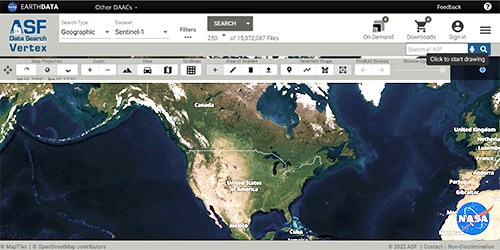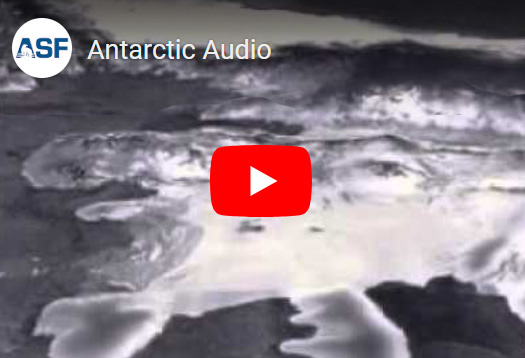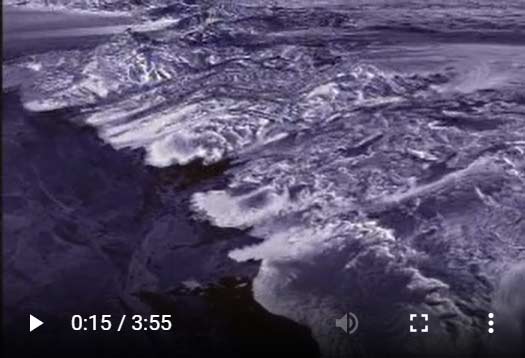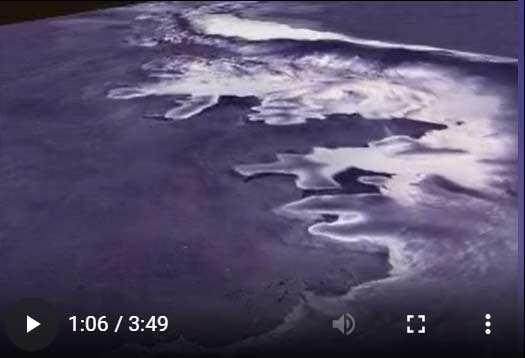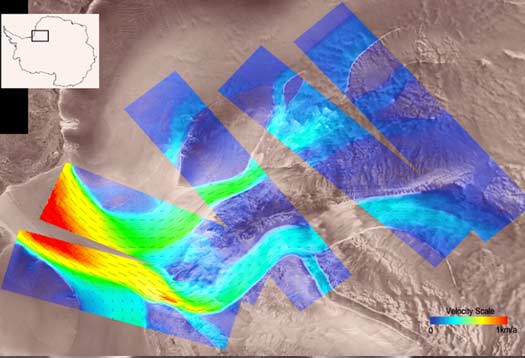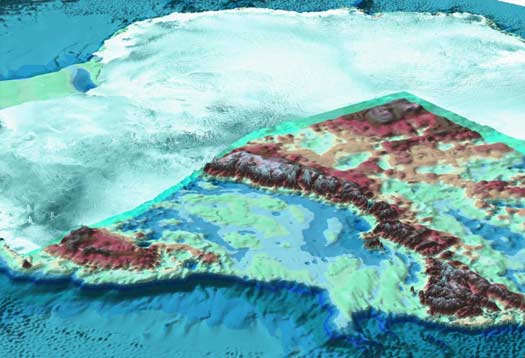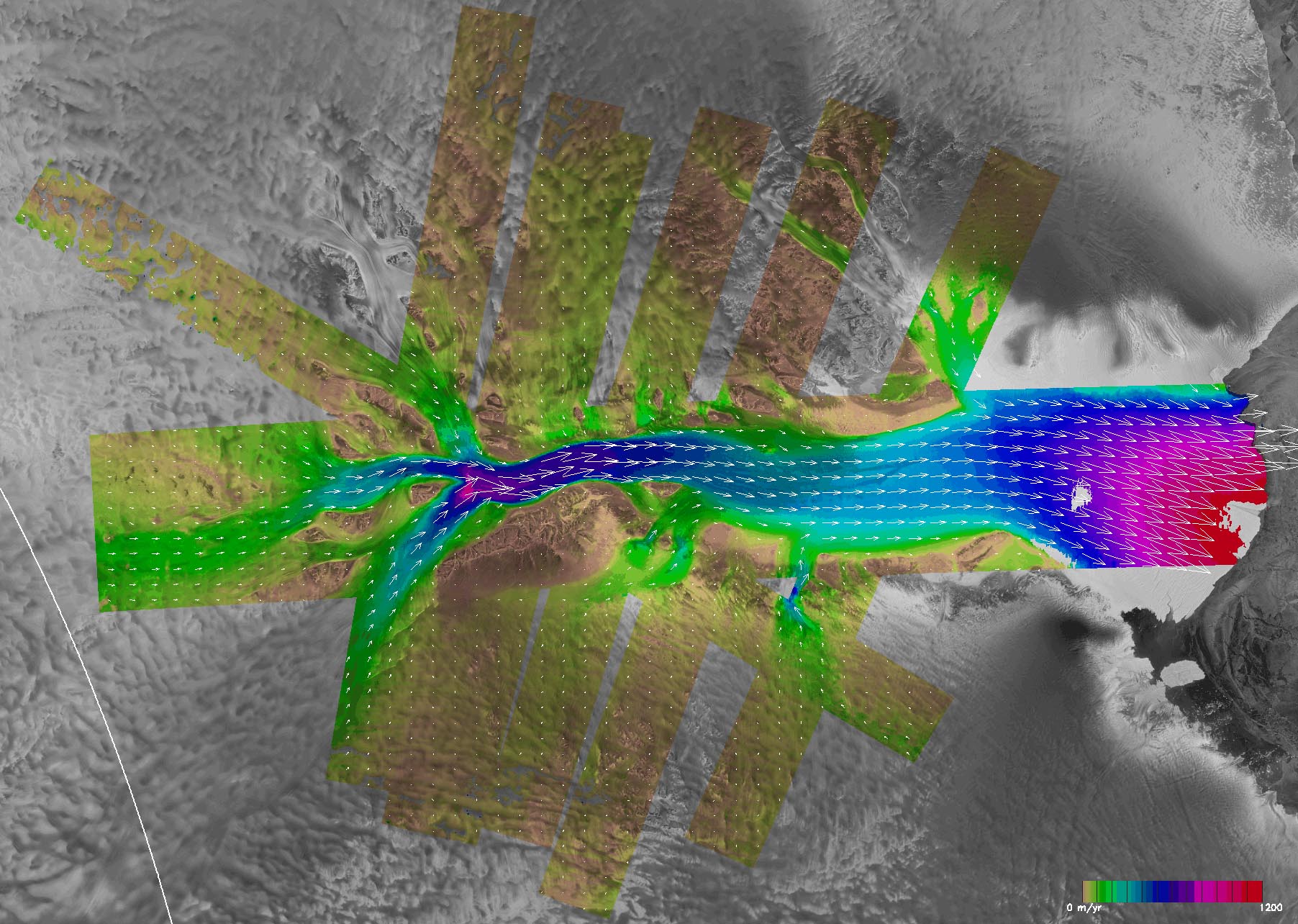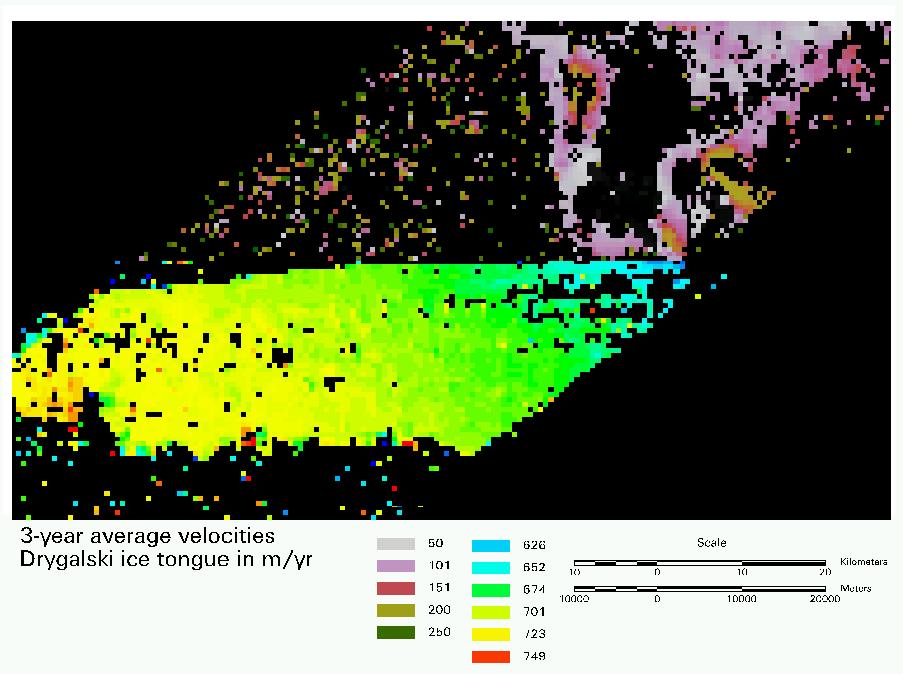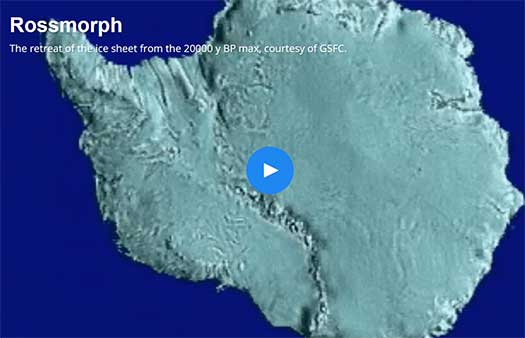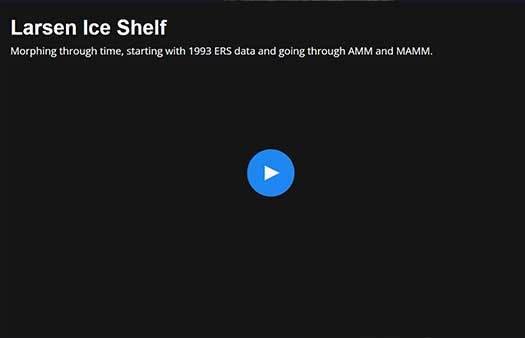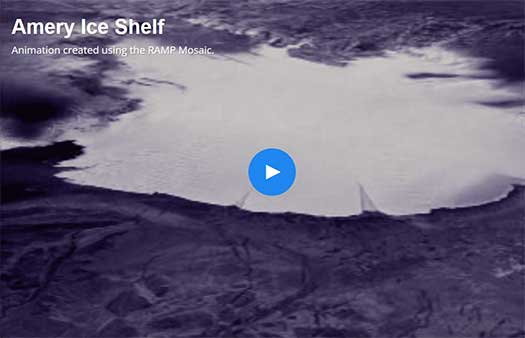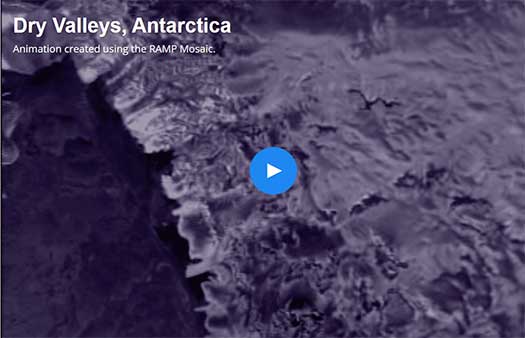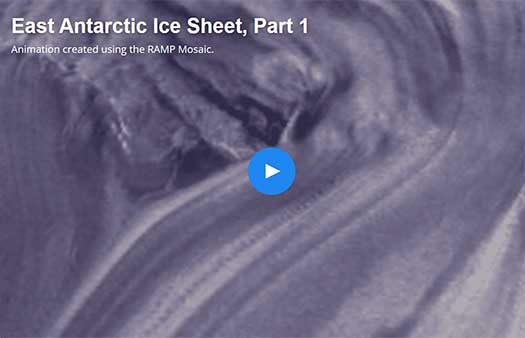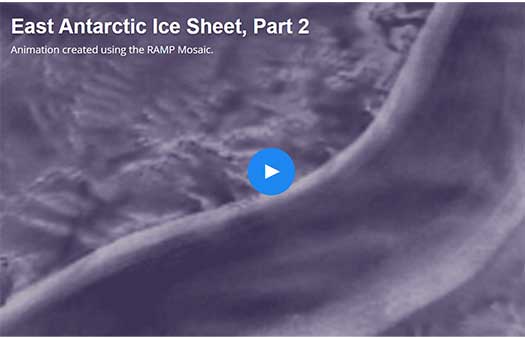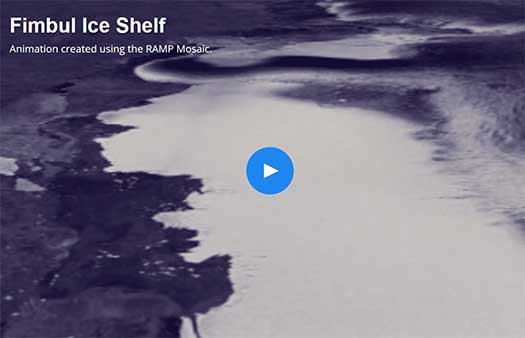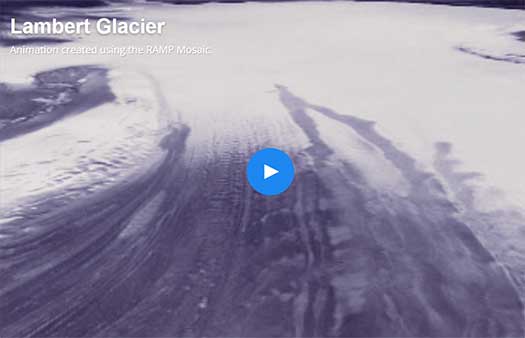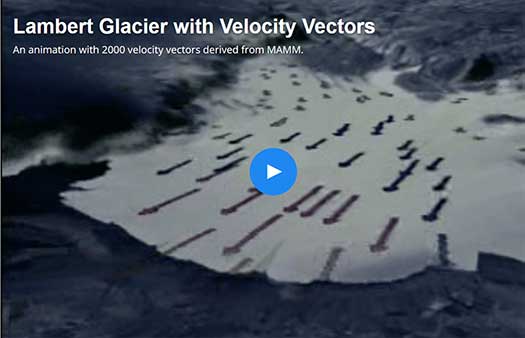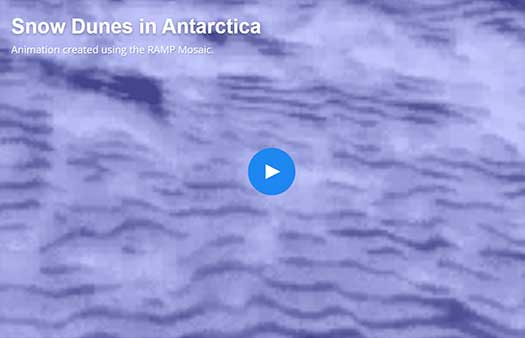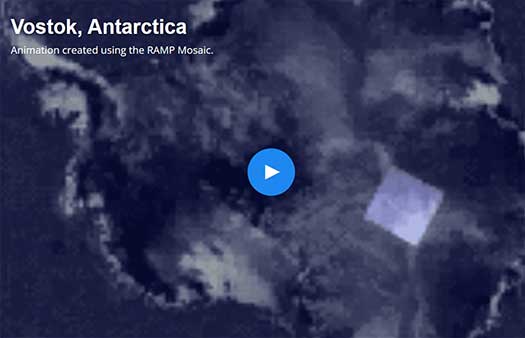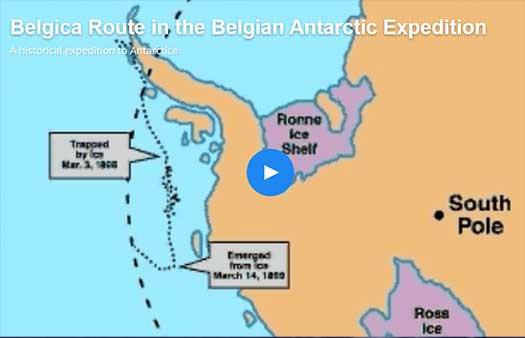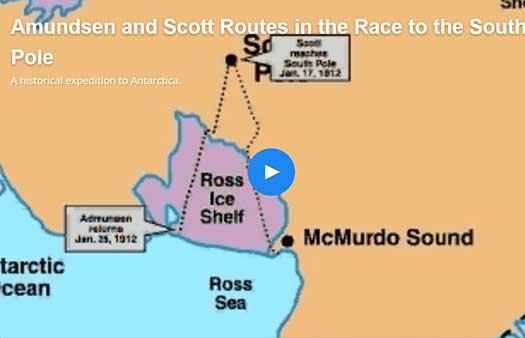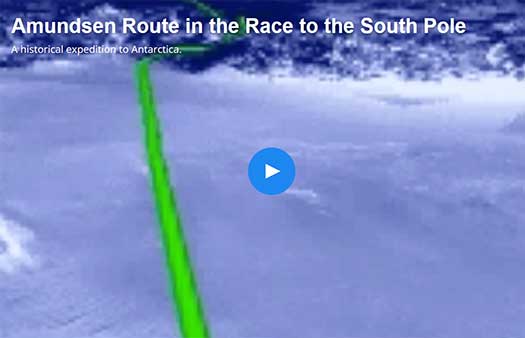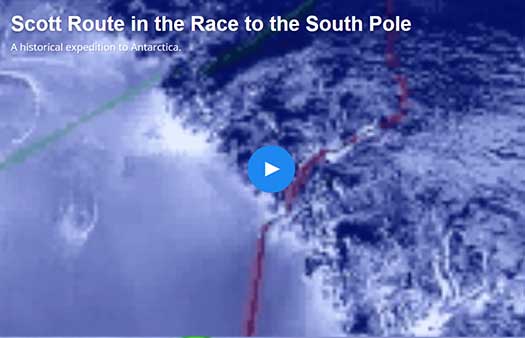RADARSAT-1 Antarctic Mapping Project (RAMP)
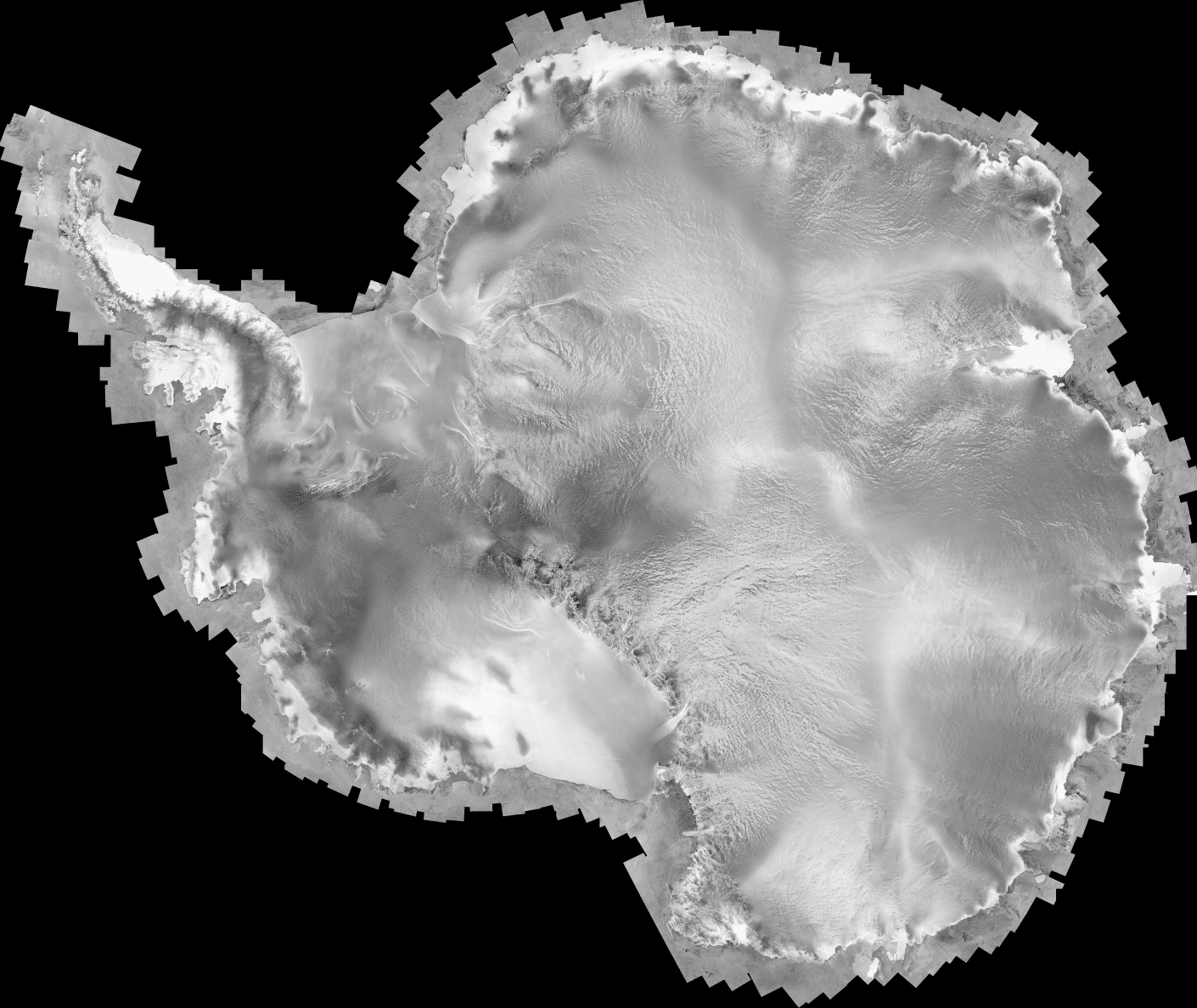
The RADARSAT-1 Antarctic Mapping Project (RAMP) was composed of two main missions, the first Antarctic Mapping Mission (AMM-1) and the Modified Antarctic Mapping Mission (MAMM). Both missions utilized RADARSAT-1, a satellite developed by the Canadian Space Agency (CSA) and launched by NASA from Vandenburg Air Force Base on November 4, 1995.
Derived data acquired 1997 and 2000 from two RADARSAT-1 satellite missions (AMM-1 and MAMM) was used to map features of Antarctica and measure ice sheet dynamics. Datasets are available as image tiles and mosaics, and velocity maps. Also available are ice velocity maps from mini-MAMM missions in 2004 and 2007.
©CSA 1997; Mosaic ©Ohio State University, 1997


RAMP
RADARSAT-1 was equipped with synthetic aperture radar (SAR), which enabled the satellite to capture high-resolution Earth imagery day and night regardless of weather conditions. The satellite covered the Earth every 24 days which allowed interferometric analysis. Functioning at C-band (5.3 GHz frequency), RADARSAT-1 was able to direct its radar beam at different angles in the right-side direction. Additional maneuvering of the satellite itself resulted in its invaluable ability to look left, increasing the number of available target locations. These features made RADARSAT-1 a well-matched satellite for the Antarctic Mapping missions.
AMM-1 started on September 9, 1997 and was completed on October 20, 1997. Its goals were to acquire a complete map of Antarctica and better understand the relationships between the southernmost continent’s environmental elements. As Antarctica’s inhospitable environment had limited the success of previous mapping endeavors, this mission’s data and imagery would prove to be a vital baseline to contrast against the data of future missions.
Using the right- and left-looking abilities of RADARSAT-1, a mosaic map of Antarctica at 25 m resolution was created. The map displayed Antarctica’s geological features through variations in radar brightness and texture, including ice streams. Ice velocity vectors were compiled using AMM-1 data to measure ice sheet movement over ice streams.
MAMM began three years after AMM-1 ended, starting on September 3, 2000 and ending on November 17, 2000. It planned to remap Antarctica and measure ice velocity data using interferometric analysis and data from AMM-1. In the three years’ difference between the two main Antarctic Mapping Missions, ice sheet advance and retreat could be observed and better evaluated as episodic change or regional climate change.
The Alaska Satellite Facility (ASF) processed AMM-1 and MAMM data into images, which The Ohio State University converted into maps and velocity fields using Vexcel Corporation software. Additional participants include the Jet Propulsion Lab (JPL) and other scientific advisors.
Expand the sections below to view content. Access the full content on a single page by clicking the button.
Missions
The SPA file is modified to allow for right looking acquisitions.
AMM_final are export files detailing the prenominal and nominal missions. These can be imported into ARC.
Interferometric SAR (InSAR) and nom_c1 include export files and html files. The latter can be read into the SPA. The number 8 suffix indicates the time automatically added by CSA to the start and end of an acquisition request.
- SPA Program Adapted for use with AMM Mission Lists
- Nominal data for AMM Mission Lists
- Insar data for AMM Mission Lists
- Final copies of the AMM Mission Lists
Documentation
- AMM Version 2.1 Radiometry
- Frameskey for Radiometry Correction (.tar folder download)
- AMM-1 Radiometry Verification
- Method used to Convert the 16-bit Amplitude Data to 8-bit
- ASF Document Outlining Calibration Procedure
- Calibration Error Spreadsheet (.xls file download)
- South Pole Deployment of an Active Radar Calibrator (ARC).
- AMM-1 Radiometry Validation
- AMM-1 Science Requirements Document
- Detailed Information on dB Conversion and Validation Reference Data in /amm_v2/TILES_dB
- Evaluation on Averaging Scheme used to Create Lower Resolution Tiers for the Sigma0 Data.
- Gives the Amplitude Equation and an Explanation on How it was used in AMM-1 and MAMM Processing
- Detailed Information on Final Tile Products and Validation Reference Data in /amm_v2/TILES
- Description of the RAMP Project
- A Comparison Document of AMM-1, MAMM_Ascending, MAMM_Descending Sigma0 Datasets using Global and Local Statistics.
Mission 2 plans
- Final Report: Modified Antarctic Mapping Mission (MAMM) Acquisition Plan: a detailed description of the development of the acquisition sequence for the RADARSAT spacecraft used to conduct the MAMM mission.
- The RadarSAT-MAMM Automated Mission Planner: documentation of the results of the automated mission planner effort presented at an artificial intelligence conference in Seattle, Washington.
- Final MAMM Plans: A directory containing the user request files i.e., the RADARSAT-1 program name for the files containing the requested data acquisitions for all three MAMM cycles.
- MAMM SPA: A directory containing an automated mission planning tool developed at JPL and used to help analyze candidate acquisition plans for compliance with various mission constraints.
- MAMM SPA export: Two export files; one for ascending coverage and the other for descending coverage.
Mini Mosaics
Validation
Geolocation Checks
- Comparison with Coast, 25 m Data
- Comparison with Coast, 100 m Data
- Interior Features 25 m Data
- Interior Features 100 m Data
- Method used to Convert the 16-bit Amplitude Data to 8-bit for the Ascending Data
- Method used to Convert the 16-bit Amplitude Data to 8-bit for the Descending Data
- Map of Problematic Bandwidth Values for Ascending IFR Pairs
- Map of Problematic Baseline Values for Ascending IFR Pairs
- Ascending Geometry Evaluation at 25 m for Coastal Regions
- Comparison with AMM-1 1997 Coastline in Rocky or Stable Areas
- Overview Document on Ascending Geometry Evaluation and Validation
- Ascending Geometry Evaluation at 100 m for Interior Regions
- Ascending Geometry Evaluation at 25 m for Interior Regions
- Interacting Map of Radiometric Artifacts Executable on any Device with Internet Access
- Centroids and Values for Bandwidth and Baseline for Ascending and Descending IFR Pairs (several spreadsheets embedded)
- Histograms of Bandwidth and Baseline for Ascending and Descending IFR Pairs
- Short Document on Ascending Coherence Mosaics
- Short Document on Descending Coherence Mosaics
- Validation of Coherence Products
- Procedure Manual for Creation of Smoothed Coherence Mosaics
- Map of Problematic Bandwidth Values for Descending IFR Pairs
- Map of Problematic Baseline Values for Descending IFR Pairs
- Validation of Final Tile Products
- ASF Document Outlining Calibration Effort
- ASF Document Outlining Processing System
- ASF Document Outlining SLC Production and Final Product Distribution
- ASF Document Outlining Test Plans and Procedures for the MAMM Mission
- ASF Document Outlining Satellite Operations Plan
- Agreement Document Between CSA and NASA using RADARSAT-1 for an Interferometric Mission
- JPL Project Agreement
- Level 1 Product Validation Documentation
- MAMM Science Requirements Document
- Vexcel Corp. Functional Requirements Document for RADARSAT Antarctic Mapping System-2
- Documentation of the Geometric Offset Adjustment made to the 10 m Mini-Mosaic Data
- Description of the RADARSAT-1 Antarctic Mapping Project
- A Comparison Document of AMM-1, MAMM_Ascending, MAMM_Descending Sigma0 Datasets using Global and Local Statistics
- Document Outlining MAMM Ascending and Descending Backscatter Product Creation
- Validation of Velocity Products
Presentations
The following table contains links to short animations created with RAMP data.
- Rossmorph
- Larsen Ice Shelf
- Amery Ice Shelf
- Dry Valleys, Antarctica
- East Antarctic Ice Sheet, Part 1
- East Antarctic Ice Sheet, Part 2
- Fimbul Ice Shelf
- Lambert Glacier
- ambert Glacier with Velocity Vectors
- Snow Dunes in Antarctica
- Vostok, Antarctica
- Belgica Route in the Belgian Antarctic Expedition
- Amundsen and Scott Routes in the Race to the South Pole
- Amundsen Route in the Race to the South Pole
- Scott Route in the Race to the South Pole
Users can download RAMP data from the NASA-sponsored ASF DAAC.
The link below will open in a new page with a browser interface to select the area of interest.
Data Discovery Tools
| Data Discovery Tool | Link |
|---|---|
| ASF Vertex Data Search | Vertex |
| Python Search Module | asf_search |
| ASF Search API | ASF Search API |
| NASA Earthdata Search | Earthdata Search |
1995-2000
1996
Geophysical Data Management System
RADARSAT: The Antarctic Mapping Project
Variations in Radar Backscatter Across the Great Ice Sheets
The RADARSAT Antarctic Mapping Project
Snapshots of Antarctica from RADARSAT-1
Flow Variations of the Antarctic Ice Sheet from Comparison of Modern and Historical Satellite Data
1999
Glaciological Properties of the Antarctic Ice Sheet from RADARSAT-1 Synthetic Aperture Radar Imagery
RADARSAT Antarctic Mapping Project- Mosaic Construction
2001-2005
2001
Ice Shelf Advance and Retreat Rates Along the Coast of Queen Maud Land, Antarctica
2002
On Reconciling Ground-Based With Spaceborne Normalized Radar Cross Section Measurements
RADARSAT-1 Antarctic Mapping Project: Change-detection and Surface Velocity Campaign
2003
Measurement of Glacier Geophysical Properties From InSAR Wrapped Phase
Observing the Antarctic Ice Sheet using the RADARSAT-1 Synthetic Aperture Radar
2004
Antarctic Ice Sheet Balance Velocities from Merged Point and Vector Data
2005
Delineation of Dry and Melt Snow Zones in Antarctica using Microwave Remote Sensing Data
Wideband Measurements of Ice Sheet Attenuation and Basal Scattering Stearns
Decadal-scale Variations in Ice Flow Along Whillans Ice Stream and its Tributaries, West Antarctica
2006-2008
Shear Measurements Across the Northern Margin of Whillans Ice Stream
2008
RAMP Report
Dissertations, Theses, and Presentations
“Application of Time Series Satellite Data to Earth Science Problems” by Kee-Tae Kim
“The Dynamic State of Whillans Ice Stream, West Antarctica” by Leigh Asher Stearns
“Estimating Balance Velocities Using GIS-based Techniques” by Xiaolan Wu
Presentations
Users can download RAMP data from the NASA-sponsored ASF DAAC.
The link below will open in a new page with a browser interface to select the area of interest.
Data Discovery Tools
| Data Discovery Tool | Link |
|---|---|
| ASF Vertex Data Search | Vertex |
| Python Search Module | asf_search |
| ASF Search API | ASF Search API |
| NASA Earthdata Search | Earthdata Search |


